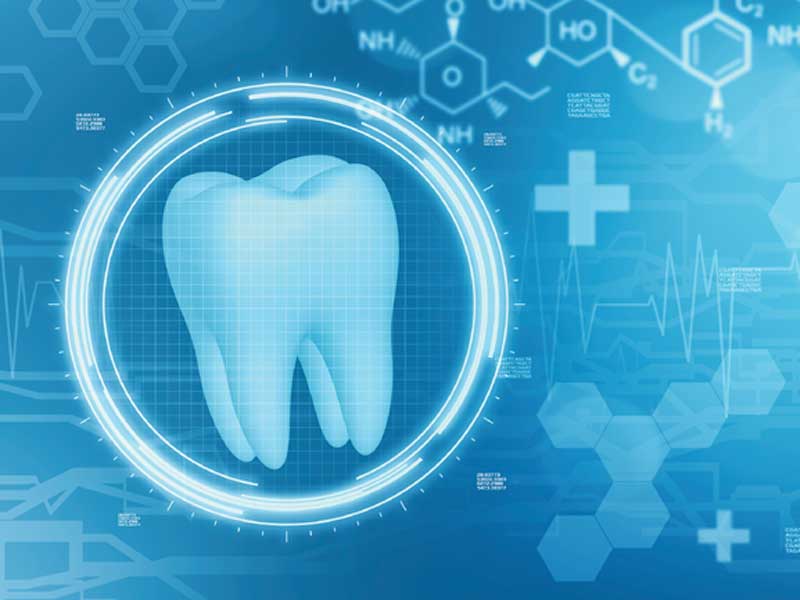By Teresa Schiffer
Alzheimer’s disease is a devastating illness that many people suffer from as they age. Experts estimate that more than 5.5 million people in the U.S. suffer from Alzheimer’s. A recent research publication from Science Advances suggests that there may be a connection between gum disease and Alzheimer’s. There is a particular bacterium that is present in gum disease that has been found in the brains of Alzheimer’s patients. This finding is raising eyebrows in the dental community and reinforcing the importance of proper oral hygiene and preventative care.
Proper oral hygiene is vital to good health, and not just for the prevention of tooth decay. Poor oral hygiene can lead to inflammation in the gums and periodontal disease, which is caused by the accumulation of bacteria in the oral cavity. Dr. Gerald Cerdan of Winter Haven Family & Cosmetic Dentistry describes the danger of gum disease, “If gum disease develops and advances, it can affect the tooth in relation to the gum tissues and the bone. Severe cases result in tooth loss. In my experience, most patients who end up getting mouth dentures got them as a result from advanced periodontal disease, not tooth decay, or a combination of both.”
It is estimated that more than half of people over the age of 30 in the U.S. have some form of periodontal disease, and that goes up to 68 percent for those age 65 and older.
Some risk factors for gingivitis and periodontitis include smoking, diabetes, and cardiovascular disease, especially if oral hygiene is neglected. Patients with Alzheimer’s or dementia are also at risk because of their inhibited ability to take care of themselves. Brushing and flossing is often neglected as these diseases progress due to increased forgetfulness and confusion.
The culprit behind the link between gum disease and Alzheimer’s is a Gram-negative oral anaerobe called Porphyromonas gingivalis. Not only is the bacteria itself found in the brains of Alzheimer’s patients, but the toxic enzyme it produces, gingipain, is, too. High levels of gingipain is also associated with the presence of two other proteins linked to Alzheimer’s, tau and ubiquitin.
Alzheimer’s is an incurable, progressive illness that attacks the brain and causes dementia. It slowly destroys memory and thinking skills, rendering the patient eventually incapable of even simple tasks. Some of the main features of Alzheimer’s are tangled bundles of fibers in the brain called neurofibrillary, or tau, tangles, abnormal clumps of brain tissue called amyloid plaques, and a loss of connection between neurons (nerve cells) in the brain. These manifestations are what cause the loss of memory and function in the sufferer.
Generally, Alzheimer’s symptoms first appear when the patient is in their 60s. Scientists believe that the damage to the brain begins a decade or more before symptoms appear. That means that an individual may have no symptoms of Alzheimer’s, yet the amyloid plaques and tau tangles are forming. The disease seems to begin in the hippocampus, which is the part of the brain responsible for forming memories. As the disease progresses, more neurons die and more areas of the brain are affected. The brain tissue shrinks, and by the final stage of Alzheimer’s the brain tissue has shrunk significantly and the damage is catastrophic.
Memory problems are often the first symptom of Alzheimer’s disease to appear, but not all patients with memory problems are suffering from Alzheimer’s. Each individual case is different, but for many, early symptoms of Alzheimer’s include cognition problems, such as word-finding, vision/spatial issues, and impaired reasoning or judgement. As the disease progresses, memory loss increases, as do other cognitive problems. People may have trouble completing normal daily tasks, and undergo personality and behavior changes. Eventually, they may be unable to learn new things, stop recognizing loved ones, and have hallucinations, delusions, and paranoia. Near the end, they become unable to communicate and entirely dependent on others for care as their body shuts down.
A compound called “COR388” has been identified as an effective gingipain inhibitor in mouse models. The compound is currently under trial, and so far, the results have been positive. Both healthy individuals and those with a diagnosis of Alzheimer’s have responded well to the treatment. A larger trial testing the effects of COR388 on individuals with mild to moderate Alzheimer’s is planned for later this year.
In the meantime, it’s important to take what steps we can to prevent and slow the process of Alzheimer’s, and good oral hygiene is part of that strategy.
“Flossing before bedtime is essential for reducing the amount of plaque and acid buildup while you are sleeping. Keep regular checkup and cleaning visits with your dentist. If gum disease is detected, your dentist may refer you to a periodontist for more extensive care to help keep it under control,” explains Dr. Cerdan.
What are some symptoms of gum disease to watch out for? Bleeding gum tissues, bad breath, pain when brushing or flossing may be early signs that you may have gum disease. However, it is best detected by your dentist during routine cleanings and checkups. Patients with gum disease develop deep pockets between the gum tissue and tooth. These pockets can become increasingly difficult to clean with just regular tooth brushing and flossing, so may require deep cleanings.
Periodontists are dentists who specialize in gum disease, and can work with your regular dentist to develop a plan for the patient to prevent the disease from worsening. Sometimes surgery is needed, but much can be done to prevent the disease from getting to that point through early detection and proactive care.
